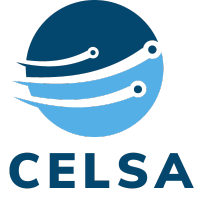EDI is an electrochemical water treatment process that addresses water scarcity and produces ultrapure water. It offers energy efficiency, continuous operation, and excellent ion removal without regenerative chemicals. Applications include semiconductors, pharmaceuticals, and desalination. Compared to traditional ion exchange methods, EDI efficiently removes heavy metal ions and operates without chemical regeneration. Advancements like resin wafer EDI, EDI reversal, and hybrid EDI methods enhance its capabilities.
Key electro-deionization (EDI) metrics
1. Removal Efficiency
This metric measures the effectiveness of the EDI process in removing ions from the water. It is typically expressed as a percentage and indicates the extent to which EDI can purify the water by removing undesirable ions.
2. Permeate Recovery
Indicates the percentage of purified water obtained compared to the total feedwater volume. Higher permeate recovery signifies better water utilization efficiency and reduced wastewater generation.
3. Energy consumption and Energy Efficiency
Energy efficiency quantifies the amount of energy required to operate the EDI system and produce a given volume of purified water, enabling comparison with other water-remediation methods. Higher energy efficiency indicates lower energy consumption and reduced operational costs.
4. Scalability
Scalability measures the system's ability to adapt and expand according to changing water treatment requirements. A scalable EDI system should allow for easy adjustments in capacity and flexibility to handle varying flow rates, treating larger volumes of water without significant disruptions or the need for major system redesign. It also involves the capability to optimize operational parameters and configurations based on specific needs or variations in water quality.
Advantages of Electrodeionization (EDI)
1. Continuous Operation
EDI operates continuously without the need for regeneration cycles, unlike traditional ion exchange systems. This allows for uninterrupted water production and eliminates downtime associated with regeneration steps.
2. Energy Efficiency
EDI is known for its energy efficiency compared to other water treatment methods. It does not require the use of chemicals for regeneration, reducing operational costs and environmental impact.
3. Ultrapure Water Production
EDI can produce high-quality ultrapure water with low conductivity, meeting stringent water quality requirements in various industries such as semiconductors, pharmaceuticals, and power generation.
4. No Chemicals
Unlike conventional ion exchange processes, EDI eliminates the need for regenerative chemicals. This makes it more environmentally friendly, reduces chemical handling, and minimizes the risk of chemical contamination.
5. Compact and Modular Design
EDI systems have a compact and modular design, making them space-efficient and easily scalable. Additional modules can be added to increase water treatment capacity as needed.
Drawbacks of Electrodeionization (EDI)
1. Initial Cost
EDI systems can have higher initial costs compared to some other water treatment technologies. However, cost-effectiveness can be achieved through long-term operational savings and reduced chemical usage.
2. Susceptibility to Scaling
EDI systems are prone to scaling when used with high-hardness water or water sources with scaling potential. Scaling can reduce system efficiency and require periodic cleaning or maintenance.
3. Feedwater Quality Requirements
EDI performance can be influenced by the quality of the feedwater. High levels of suspended solids, organic matter, or certain contaminants may require pre-treatment to ensure optimal EDI operation and prevent fouling.
4. Limited Application for Some Contaminants
While EDI is effective for ion removal and producing ultrapure water, it may have limitations in removing certain non-ionic contaminants or specific trace elements, requiring complementary treatment processes.
Applications of EDI in water treatment
1. Desalination (salt ions removal)
EDI can be used as a component in desalination processes to remove dissolved salts and produce fresh water from seawater or brackish water sources.
2. Water Softening
EDI can effectively remove hardness-causing ions like calcium and magnesium from water, providing a water softening solution without the need for regenerative chemicals.
3. Resource Recovery
EDI enables the recovery of valuable resources from wastewater streams. It can selectively remove target ions, such as nutrients or metals, allowing for their potential reuse or safe disposal.
4. Metal Ion Removal
EDI has the ability to remove various metal ions, including heavy metals like cobalt, cesium, nickel, chromium, copper, and arsenic. This makes it suitable for applications requiring effective metal ion removal.
5. Ultrapure Water Production
EDI is widely used in industries requiring ultrapure water, such as semiconductor manufacturing, pharmaceuticals, and power generation. It can consistently produce water with extremely low conductivity and high purity.
Conclusion
Overall, the advantages of EDI, such as continuous operation, energy efficiency, ultrapure water production, and chemical-free operation, make it a promising technology for various applications. However, considerations should be given to initial costs, feedwater quality, scaling potential, and limitations in treating certain contaminants.

